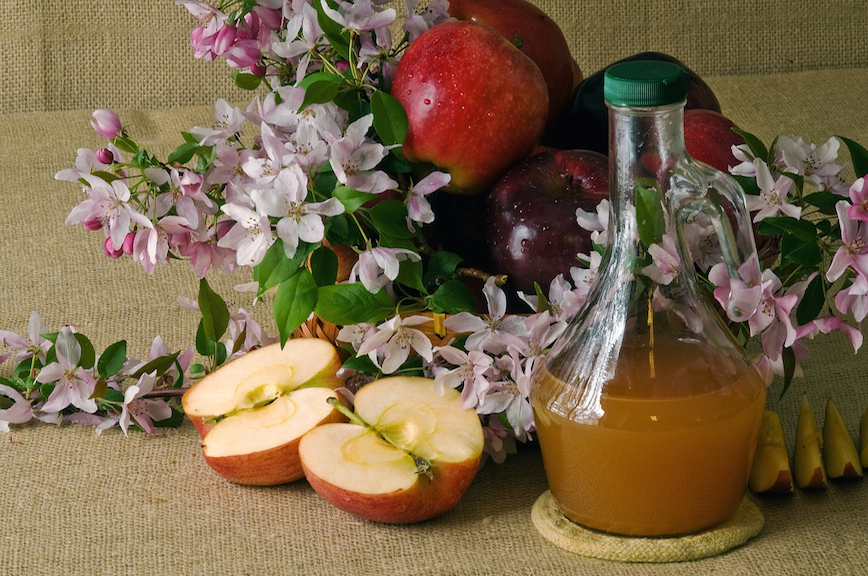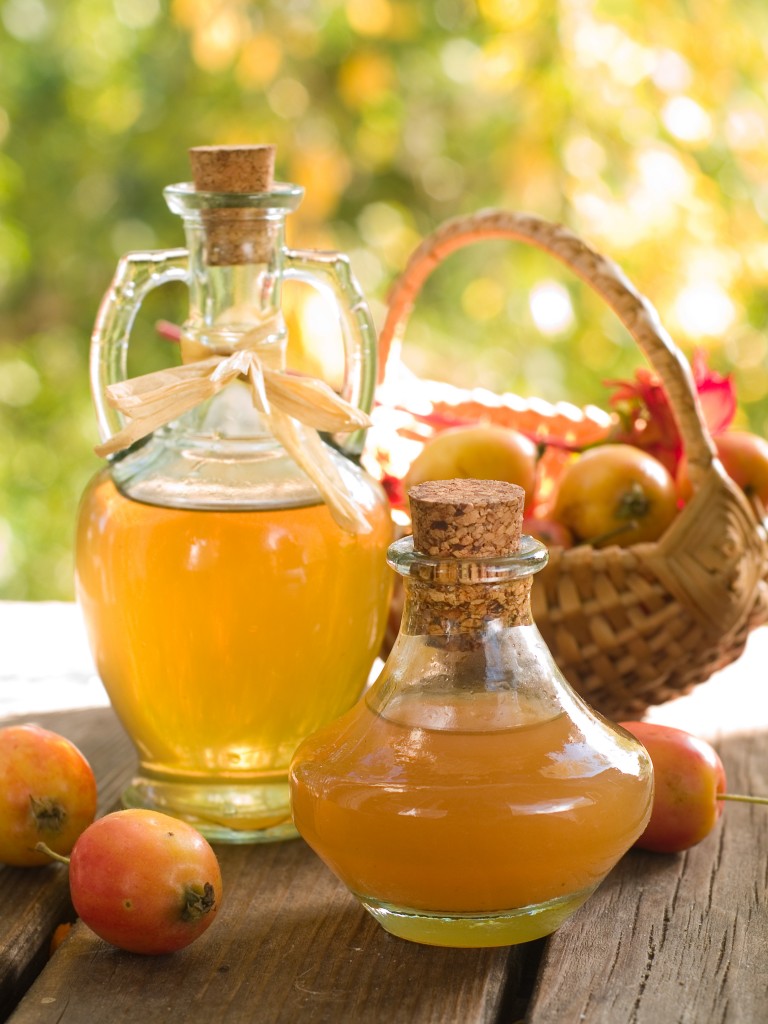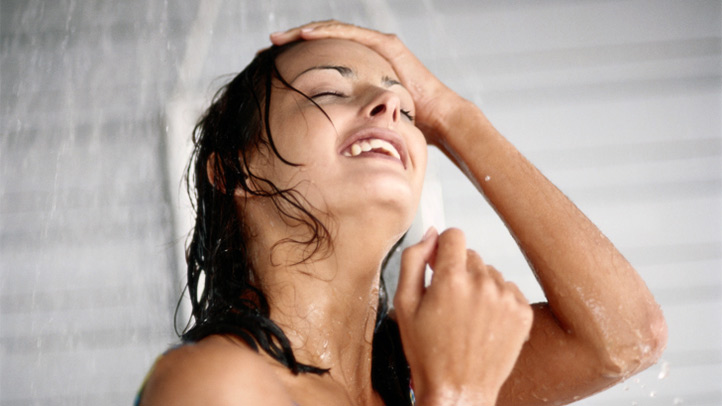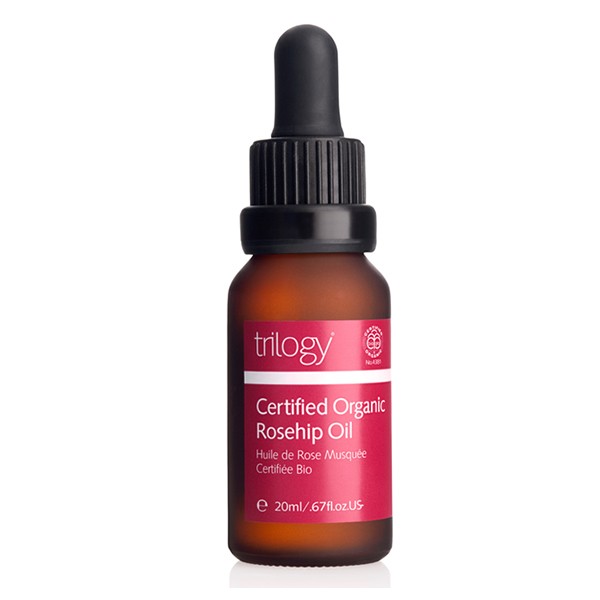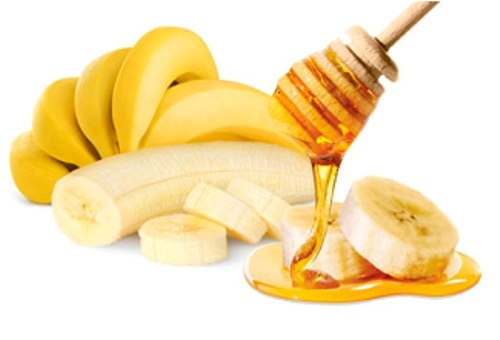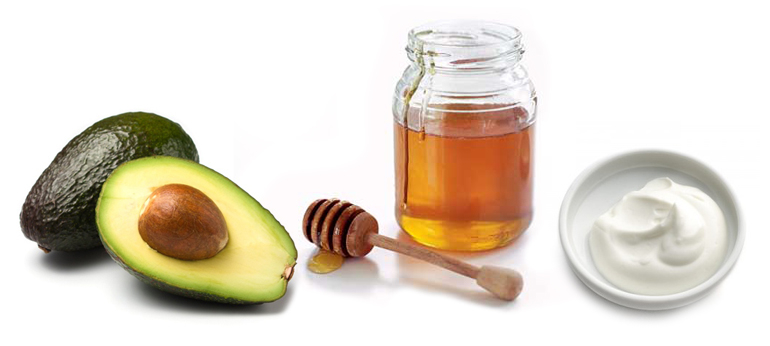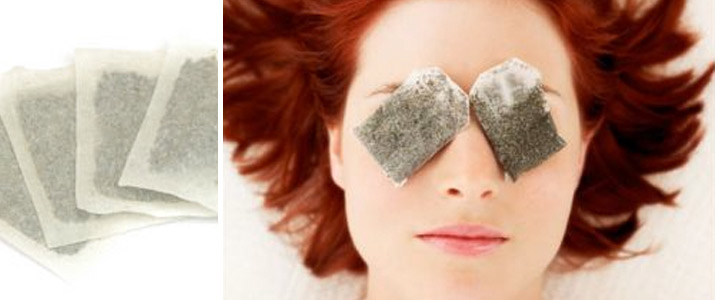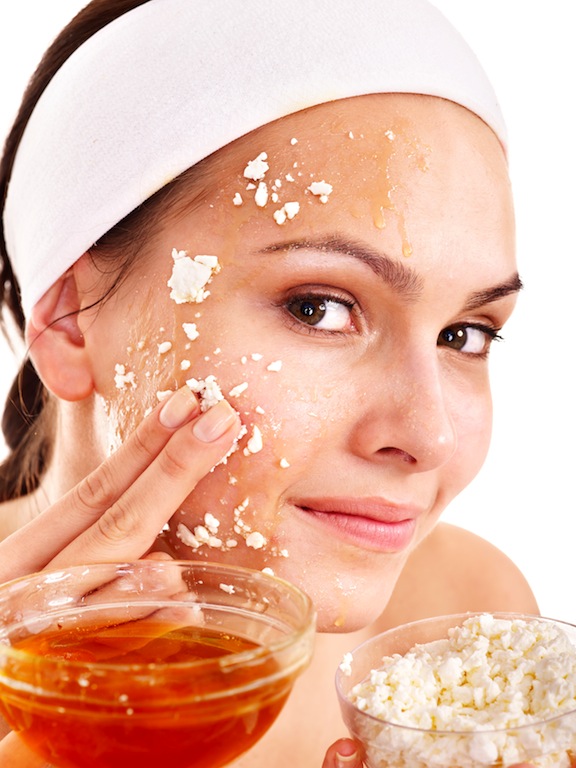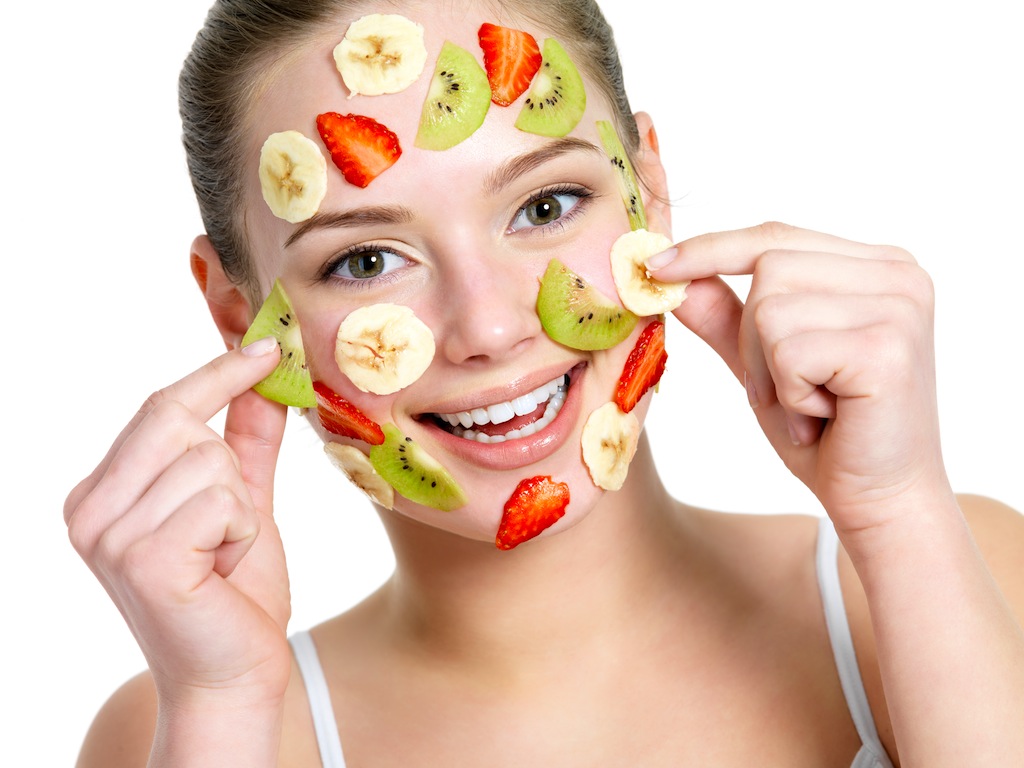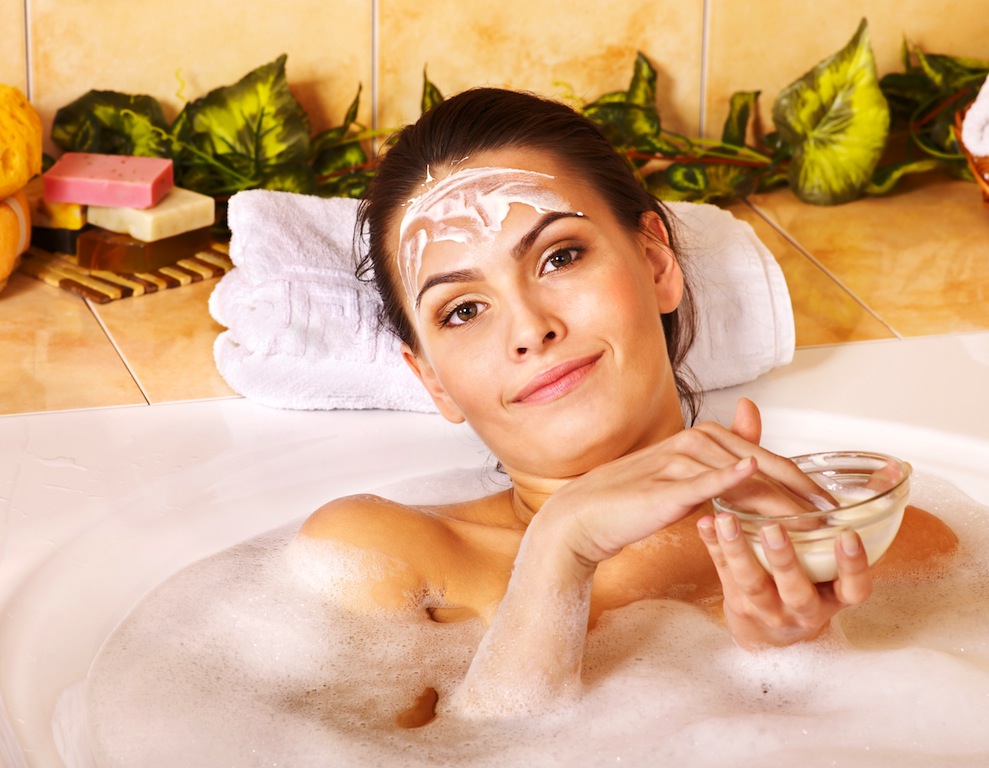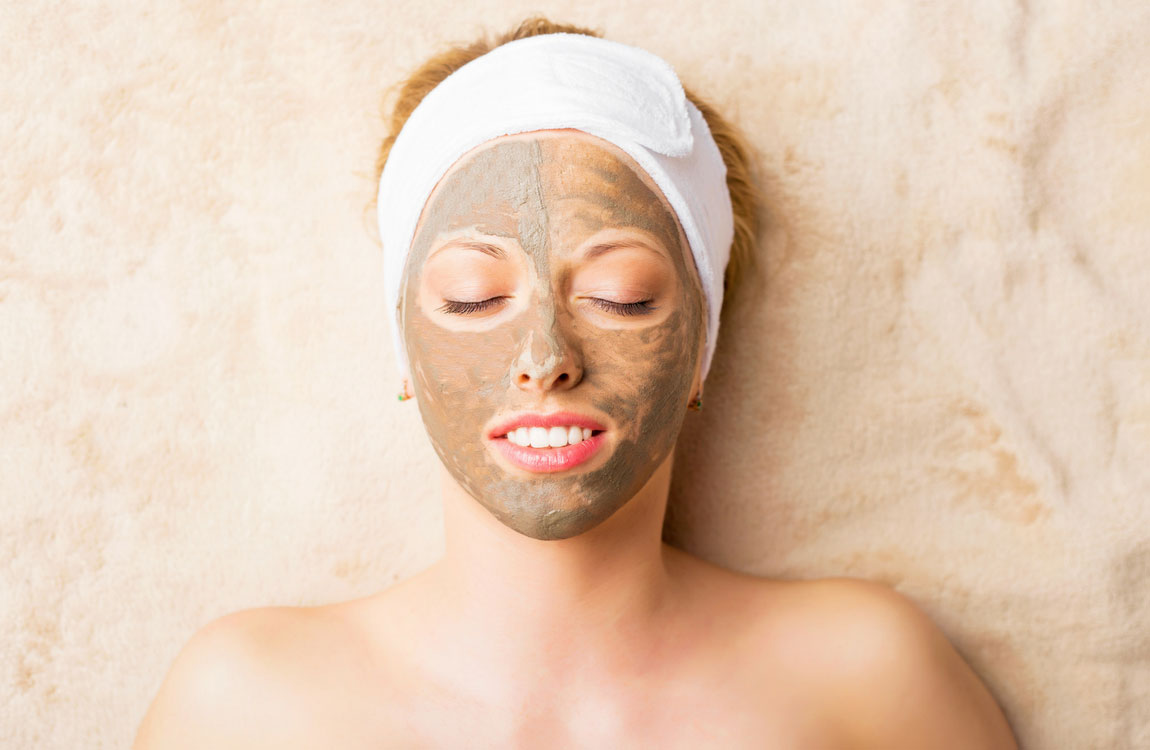The unlimited uses Of Apple Cider Vinegar for Skin and Health
In week 350 we are sharing the facts and unlimited usage of VINEGAR, for centuries fermentation has been used in many cultures, and it continues to do so. I grew up with foods being fermented by my mother or the Nana, both of them taught me the best value of fermentation. Here, we wish to share it, so you and your family can benefit from it, Our family uses Vinegar from food to hair, skincare pets, to repel insects and so much more.
For centuries, apple cider vinegar has been used for many purposes: cleaning, polishing, cooking, salad dressings, skin and hair treatments and to relive wellbeing challenges and many more uses.
Whether your kitchen cupboard is graced with the most elegant wine vinegar or cheap and cheerful malt, the chances are that somewhere in the house you will have a bottle of this precious product.
At the heart of even the fanciest variants is a simple enough compound: Acetic Acid. Officially called ethanoic acid, with the formula CH3CO2H, the acid is the result of oxidizing ethanol, the alcohol in intoxicating alcohol drinks.
Leave a bottle of wine of any kind exposed to the atmosphere and within a few days it will have taken on a sharp and sour taste as more and more of the alcohol is turned to this weak acid by acetic acid bacteria and it works like a magic act every time. These species are common in the air and come in a range of genera from Acetobacter to Acidiphilium, but all with the distinct urge to oxidize ethanol to gain energy.
In its familiar domestic form (food use), vinegar is typically only around five percent acetic acid by volume with most of the rest water, plus traces of other compounds.
For industrial use, acetic acid was originally derived from vinegar, but since the early twentieth century, it has largely been produced from wood or, most recently, by reacting methanol and carbon monoxide over a catalyst.
According to:http://www.rsc.org/chemistryworld/podcast/CIIEcompounds/transcripts/vinegar.asp
Most of the acetic acid produced this way is not destined for our vinegar bottles, which retain the old ‘fermentation’ methods from alcoholic drinks, but rather as a raw material in the production of three broad types of compounds. The largest proportion goes to the manufacture of vinyl acetate monomer, itself a starting point for the polymer polyvinyl acetate or PVA, familiar to many people through its wide use as a glue. Another significant chunk of the over 6 million tons produced each year is used to form acetic anhydride, a step in the production of cellulose acetate, used in coatings and photographic films. Much of the rest will either act as a solvent or be used in the production of esters for inks and paints.
In its vinegar form, acetic acid makes its way into all areas of catering. Vinegar’s partnering with salt, when associated with chips, is legendary in the UK at least, in some parts of which it is also an essential additive to mushy peas, modifying the gluey pea juice to a more palatable and zesty mix. By extension, vinegar makes its way into flavoring for crisps (or potato chips) and is a major component of bottled sauces.
You are also likely to find vinegar in your store cupboard acting as a preservative. While brine can be used in pickling, the most popular approach for picking vegetables is to use vinegar, which ironically, given its bacterial origins, has the role of killing bacteria to preserve otherwise perishable food
Apple cider vinegar is a product of double fermentation. This is a process in which sugars in food are broken down by bacterias and yeast. In the first stage of fermentation, the sugars are generally turned into alcohol. The word vinegar originates from the French, meaning “Sour Wine”, Vinegar can be made from all sorts of products, like fruits, vegetables and grains – Apple Cider vinegar comes from apple scraps or pulverized apples.
You probably saw it in the supermarkets, the bottles containing cloudy sediment at the bottom. These sediments are known as the “ Mother of Vinegar “ and are mostly composed of beneficial bacteria from acetic acid. The main ingredient in apple cider vinegar or any vinegar is acetic acid, part citric, malic and lactic acids.
Acetic acid
At the heart of even the fanciest variants is a simple enough compound: acetic acid. Officially called ethanoic acid, with the formula CH3CO2H, the acid is the result of oxidizing ethanol, the alcohol in intoxicating drinks. Leave a bottle of wine exposed to the atmosphere and within a few days it will have taken on a sharp-sour taste as more and more of the alcohol is turned to this weak acid by acetic acid bacteria. These species are common in the air and come in a range of genera from Acetobacter to Acidiphilium, but all with the distinct urge to oxidize ethanol to gain energy.
Pure acetic acid is a clear liquid which in the lab is usually called ‘glacial’, a term that refers to its tendency to produce crystals that resemble ice at low room temperature. In its familiar domestic form, vinegar is typically only around five percent acetic acid by volume with most of the rest water, plus traces of other compounds. Vinegar can be as clear as the original acid but often has the colorings from its source, the wine, for example, in wine vinegar.
Citric Acid
from: http://www.sciencedaily.com/terms/citric_acid.htm
Citric acid is a weak organic acid found in citrus fruits.
It is a natural preservative and is also used to add an acidic (sour) taste to foods and soft drinks. In biochemistry, it is important as an intermediate in the citric acid cycle and therefore occurs in the metabolism of almost all living things. It also serves as an environmentally benign cleaning agent and acts as an antioxidant. Citric acid exists in a variety of fruits and vegetables, but it is most concentrated in lemons and limes, where it can comprise as much as 8 percent of the dry weight of the fruit.
Malic Acid
from http://acidpedia.org/malic_acid/
Malic acid is a component of many of the foods that we eat daily. Although it is found as a naturally occurring organic compound in various fruits, many choose to take malic acid supplements to increase their overall health, as well as treat various maladies. Today, the acid is most commonly used as a food additive and preservative. It is a mild and relatively harmless acid when used in appropriate amounts. As a food supplement, it is generally considered beneficial for health and is present in large amounts in apple juices. As when taking any supplement, however, you should not exceed the recommended amounts for consumption.
Lactic acid
from: https://en.wikipedia.org/wiki/Lactic_acid
Lactic acid is an organic compound with the formula CH3CH(OH)CO2H. It is a white, water-soluble solid or clear liquid that is produced both naturally and synthetically. With a hydroxyl group adjacent to the carboxyl group, lactic acid is classified as an alpha hydroxy acid (AHA). In the form of its conjugate base called lactate, it plays a role in several biochemical processes.
Lactic acid is found primarily in sour milk products, such as koumiss, laban, yogurt, kefir, some cottage cheeses, and kombucha. The casein in fermented milk is coagulated (curdled) by lactic acid. Lactic acid is also responsible for the sour flavor of sourdough bread.
Vinegar can be made from almost any fermentable carbohydrate source, including wine, molasses, dates, sorghum, apples, pears, grapes, berries, melons, coconut, honey, beer, maple syrup, potatoes, beets, malt, grains, and whey to mention a few.
The use of vinegar with a variety of plants or essential oils for cosmetic purposes can be traced back to the Romans and was fashionable during the 19th century as vinegar de toilette.
Read more: http://www.care2.com/greenliving/apple-cider-vinegar-skin-tip.html#ixzz3DtJqRutT
Hippocrates known as the father of modern medicine used apple cider vinegar as a health tonic.
Christopher Columbus sailed with 55 gals. drums aboard his ships to fight scurvy.
Apple Cider vinegar is said to speed up metabolism and found that vinegar also burns fat faster.
Alkaline Acid Balance – Despite being an acidic solution, apple cider vinegar has an alkalinizing effect on the body.
Some alternative practitioners recommend using apple cider vinegar to restore alkaline acid balance. The theory behind the alkaline diet is that our blood is slightly alkaline (with a normal pH level of between 7.35 and 7.45) and that our diet should reflect this pH level. Proponents of the alkaline-acid theory believe that a diet high in acid-producing foods leads to a lack of energy, excessive mucus production, infections, anxiety, irritability, headache, sore throat, nasal and sinus congestion, allergic reactions, and increased risk of conditions such as arthritis and gout.
Despite being an acidic solution, some proponents of apple cider vinegar believe it has an alkalinizing effect on the body. As such, they recommend one to two teaspoons of apple cider vinegar in water as a daily health tonic.
Acetic Acid inhibits the activity of several carbohydrates- digesting enzymes, including amylase, sucrase, maltase, and lactase. As a result, when vinegar is present in the intestines, some sugars and starches temporarily pass through without being digested, so they have less impact on blood sugar.
- improves insulin sensitivity during a high-carb meal by 19-34% and significantly lowers blood glucose and insulin responses.
- 2 tablespoons of apple cider vinegar before bedtime can reduce fasting blood sugars by 4%
- Numerous other studies show that vinegar can increase insulin sensitivity and significantly lower blood sugar responses during meals.
Make sure you get the raw Apple Cider vinegar to get the most benefits from it. Apple Cider vinegar which is unfiltered, unheated, unpasteurized with plenty of the MOTHER VINEGAR. The mother is made up of living nutrients and bacteria. This is were most of the health benefits come from. It doesn’t have a great look, but is the most nutritious and has many of the bacterial and anti-fungal properties.
The ingredients of raw Apple Cider vinegar: potassium, pectin, malic acid, acetic acid, and ash ( ash creates alkalinity in the vinegar and helps to maintain a healthy alkaline state)
Apple Cider vinegar for the Skin: Dr Frank Lipman great site to visit
According to http://www.drfranklipman.com
There are several key attributes to ACV for maintaining beautiful skin, and exfoliation is one of them. Exfoliating is a key element for keeping youthful healthy skin. There are several ways to exfoliate, and one of them is by “digesting” dead skin cells, which the acids in ACV do. This mild cell turnover is widely used as a skin treatment to improve, soften, and smooth skin texture. The new skin layer once revealed, is more vibrant, youthful, and healthy.
With a pH similar to skin, AVC helps restore and balance your skin’s pH and acid mantle. This too is key to healthy, beautiful skin. The acid mantle is the combination of sebum (oil) and perspiration on the skin’s surface. This barrier protects the skin and makes it less vulnerable to environmental damage (smog, sun, and wind), less prone to dehydration, and also inhibits the growth of foreign bacteria and fungi (enabling skin to be healthier and have fewer breakout and blemishes. Acne, allergies and other skin problems become more severe as the skin becomes more alkaline).” Mild” soaps are often alkaline (pH 9.5-11), and remove the natural acid protection as well as extract protective lipids (fats) from the skin. Washing with soap can increase this alkaline state and make the skin even more vulnerable to irritation and infection. Most people are cleansing with products that are breaking down their acid mantle and causing increased skin issues. Balancing your pH is an imperative part of maintaining healthy skin.
14 Benefits of Apple Cider Vinegar:
Tame tummy troubles.
The pectin content in ACV helps treat diarrhea by forming bulk fibrous matter. The pectin also forms a protective coat for soothing the colon lining and intestinal spasms. Try mixing one or two tablespoons into water, or clear juice like apple juice.
Prevent indigestion.
Sip before eating, especially if you know you’re going to indulge in foods that cause indigestion. Add 1 teaspoon of honey and 1 teaspoon apple cider vinegar to a glass of warm water and drink it 30 minutes before you dine.
Help clear a stuffy nose.
Mix a teaspoon of apple cider vinegar in a glass of water and drink. This helps sinus drainage.
Help for hiccups.
Since hiccups are often caused by either low stomach acid slowing the digestion of protein, or eating too much…ACV can be a great solution for hiccups. It restores the acid balance in the stomach and eases irritating spasms of the diaphragm.
Soothe a sore throat.
As soon as you feel the prickle of a sore throat, take some ACV to help head off the infection at the pass. Turns out, most germs can’t survive in the acidic environment vinegar creates. Just mix ¼ cup apple cider vinegar with ¼ cup warm water and gargle every hour or so.
Reduce swelling.
Rubbing apple cider vinegar onto swollen hands or feet reduces swelling. A wonderful thing during pregnancy!
Extinguish exhaustion.
Exercise and sometimes extreme stress cause lactic acid to build up in the body, causing fatigue. Apple cider vinegar contains potassium and enzymes that may relieve that tired feeling. Next time you’re feeling beat, add a tablespoon or two of apple cider vinegar to a glass of chilled vegetable drink or to a glass of water.
Relieve nighttime leg cramps.
ACV taken diluted in water twice daily, will dissolve acid crystals in the blood and provide potassium, calcium and other essential minerals to the body needed to ease the leg cramps.
Banish bad breath.
Due to its acidic properties, Apple Cider Vinegar makes a wonderful remedy for bad breath or halitosis. Simply add 1/2 tablespoon of ACV into a cup of water and gargle the mixture in your mouth for 10 seconds at a time until the cup is empty.
Fight yeast infections.
One of the best home remedies to treat a yeast infection is Apple Cider Vinegar. Add 1 and a half cups of ACV into a bathtub filled with warm water, and then soak in it for about 20 minutes. This should be done once a day for the first 3 days of the infection
Foot or skin fungus.
Just as ACV can help kill Candida in the body, it is often useful against yeast and fungus on the skin and nails. If you have foot or toe fungus, soak the feet in 1 cup of ACV in water or apply directly to the affected area. For skin fungus or yeast, apply ACV directly. For children or those with sensitive skin, it is best to dilute the ACV with water before applying to the skin.
Control blood sugars.
The anti-glycemic effects of apple cider vinegar help to improve insulin sensitivity, which is essential to maintain the sugar levels of blood. Mix one teaspoon of Apple Cider Vinegar in a glass of filtered water and take 3 times a day to steady your stomach’s rate of digestion which in turn will keep blood sugar levels more consistent. If you are diabetic, consult your physician.
Boost weight loss.
Many people claim that Apple Cider Vinegar promotes weight loss by speeding up the metabolism. A suggested remedy is to mix 2 teaspoons of the vinegar into a glass of water and drink this before every meal or sip it slowly throughout the day
Lower blood cholesterol.
Research has indicated that apple cider vinegar improves the lipid profile of blood by decreasing the levels of triglycerides and low-density lipoprotein cholesterol (LDL-C) or bad cholesterol, as also by increasing the levels of high-density lipoprotein cholesterol (HDL-C) or good cholesterol. If you have high cholesterol, consult your physician.
from: http://www.apple-cider-vinegar-benefits.com
Weight Loss
Another major apple cider vinegar benefit is weight loss. Although no one is sure how it works, it has helped many people lose weight. Click on the Weight Loss section to find out what the experts recommend as far as how much to take and how often, and the latest theories on why it works.
Cooking with apple cider vinegar
Apple cider vinegar is an amazingly versatile cooking ingredient. It adds a tangy taste to many drinks and deepens the flavors of numerous foods. It’s important to note that vinegar is a major ingredient in most condiments. Mayonnaise and tomato ketchup account for more than 10% of the vinegar production in America.
Pet care
Ear Care Product
Unfortunately a large percentage of dog and cat visits to the veterinarian are for ear problems, but the good news is, you can help reduce these visits by cleaning your pet’s ears on a regular weekly basis.
An inexpensive way to do this is to dip a soft cotton ball into a solution of equal parts apple cider vinegar and water and use it to swab the inside of his or her ear.
For an infected ear, use 5 ml of the 50:50 vinegar-water solution per 20 lbs (9 kg) of body weight, applying the solution with a syringe obtained from your local pharmacy. Gently rub in the solution then wipe the inside of the ear with a soft cotton ball. This should be done daily for 5 days.
The vinegar helps to control the growth of unfriendly bacteria and other microorganisms that are a common cause of ear infections, and as a result, this will help keep your pets from scratching their ears.
Fleas and Ticks
Rather than use commercial sprays, powders, pills, or collars that use very toxic chemicals to kill fleas and ticks, many people prefer to take a more natural holistic approach. According to Martin Goldstein, DVM, some of these products could also be harmful to your pets.
As an alternative, Roger DeHaan, DVM, suggests using a homemade shampoo and rinse that kills fleas and at the same time soothes irritated skin:
Add to an 8-ounce bottle of your favorite pet shampoo, 10 drops of tea tree oil, and one tablespoon (15 ml) of aloe vera and shake well.
Shampoo your pet as you would normally then wait for 6-10 minutes.
Rinse with apple cider vinegar diluted in water. (1 tablespoon ACV to 1 pint of water)
For minor flea infestations, another recommendation involves washing your pet with a gentle shampoo, followed by a thorough rinse then spraying on apple cider vinegar diluted with an equal amount of warm water. Allow the pet to drip or shake dry.
The fleas will drown in the soapy shampoo water and the vinegar rinse will acidify your pet’s skin making it very unattractive to other fleas and ticks.
Relief for skin problems
Apply unpasteurized apple cider vinegar with the aid of a soft cotton ball, directly to burns or skin acne to soothe and promote healing.
For dry itchy skin, hot spots, or skin infections you can bathe your pet in warm water then rinse him or her with a solution of 1 part ACV to 3 parts water. This vinegar rinse will also leave their coats soft and shiny.
Beauty benefits of apple cider vinegar
from: http://www.bodyandsoul.com.au/beauty/body/beauty+benefits+of+apple+cider+vinegar+,24363
In its raw form, apple cider vinegar alkalises your system promotes healthy digestion, and encourages the growth of healthy bacteria in your body. It also helps promote cellular cleansing.
In her book, The Beauty Detox Foods, celebrity nutritionist Kimberly Snider (her clients include Drew Barrymore, The Black Eyed Peas’ Fergie, Channing Tatum, Teresa Palmer, and Vince Vaughan), to name only a few, says, “Raw apple cider vinegar is high in minerals and potassium … it has antiseptic qualities and can help cleanse your digestive tract, promoting bowel movements.”
Because of this, it is thought to help clear away congestion, blemishes, and acne.
“I have noticed a definite link between constipation and acne in my clients,” says Kimberly. “Raw apple cider vinegar is a strong digestive aid, helping to cure constipation and stimulating stomach acid, which aids in digestion. Its antiviral, antibacterial, and antifungal properties are of further benefit in dealing with candida and yeast issues.”
It is indeed one of nature’s most powerful beauty ingredients. Kimberly warns that you must ensure you use raw and unfiltered, which implies that it is still unpasteurized and contains its original enzymes. She advises to sprinkle it over salads in place of your regular dressing or to dilute a tablespoon in a glass of water about 20 minutes prior to eating.
You can use it topically, too. It brightens the skin, adds gloss to your hair, and can even lift away stains from your nails. Here are a few handy hints!
– Use apple cider vinegar in place of your regular toner. Drench a cotton wool ball with water first, and then dip it in the vinegar. Sweep it lightly over your face and throat, avoiding the eyes. It will promote clarity of complexion, diminish discoloration and age spots and help to clear away pimples.
– Use it as a final rinse through your hair after washing and conditioning. Leave it on for half an hour, then rinse away to lift the smell, but leave mega-watt shine. It’s also thought to relieve dandruff when applied straight to the scalp.
– Soak stained fingernails in a bowl of pure apple cider vinegar for twenty minutes. Rinse, and massage a small amount of olive oil into each nail bed. Likewise, swish a mouthful of it between your teeth to promote a healthy oral environment and also assist in lifting away mild stains on your teeth.
– Apple cider vinegar has really powerful astringent, toning properties. Because of this, it’s thought to be effective on cellulite. As part of your cellulite plan, which should include a well-balanced diet and plenty of exercises, try soaking in a warm bath with a cup of apple cider vinegar added.
Why You Should Wash Your Face With Apple Cider Vinegar
from http://www.healthyandnaturalworld.com/wash-face-apple-cider-vinegar/
ACV for Age Spots
ACV contains powerful alpha hydroxy acids to help remove dead skin cells and reveal a fresher and healthier complexion underneath them. Many expensive commercial face washes bang on about the tiny amounts of alpha-hydroxy acids they’ve added to their products, but ACV is full of far higher levels, of which are alive and ready to revive your skin. The ‘natural’ ingredients in commercial face products are actually dead and useless by the time they are processed and bottled up.
When you use ACV for age spots, apply a little undiluted ACV directly onto the age spots with a cotton wool bud and leave for about 20-30 minutes once or twice a day before rinsing off. Do it for about 6 weeks to see if you notice any improvement.
Before you use ACV all over your face, it is advisable to test it on a small area of your face. Under the chin is a good spot, just in case you do get a reaction, then it’s not too noticeable!
To apply ACV to your skin, simply use a cotton bud and gently glide over the skin to remove make-up, oil, and impurities. Be careful not to get it in your eyes!. If you are suffering from a breakout, then be warned it will sting your pimples. However, this should feel like a ‘good’ hurt, and not be intolerable.
When you use AVC for the first time, after 5 minutes, it is a good idea to rinse it off with warm water. This is just so your skin isn’t too exposed to ACV on your first time. If you don’t get a reaction, then the next time you use it, don’t wash it off, and then you can build up your skin’s tolerance. It is best to apply the ACV toner at night as ACV can increase sensitivity to ultra-violet rays.
Don’t leave your body out. ACV isn’t just for your beautiful face. If you suffer from acne on your back, you are not alone. Fortunately, ACV is wonderful for treating acne on the back too. If you’re worried about how you’re going to apply it, then just use a spray bottle.
More Uses For Apple Cider Vinegar
from http://www.drfranklipman.com/apple-cider-vinegar-and-skin-care/
Hair rinse: Apple cider vinegar gets rid of residue build-up on hair, leaving it soft and shiny. Mix ¼ cup apple cider vinegar with 2 cups water. Apply after shampooing.
Dandruff: Mix 1 part apple cider vinegar to 3 parts warm water, apply to scalp. Use a hair toner/dye bottle or any bottle that has a pointy tip that will allow you to get the liquid directly on your scalp.
Deodorant: Since ACV helps adjust the skin’s pH level, it helps to eliminate odor-causing bacteria. For underarms use a cotton ball to apply, for feet: Add ½ cup ACV to a bowl of water; soak feet.
Acne: Mix 1 part ACV, and 3 parts Rooibos tea and apply to blemishes. You can add a drop of Tea Tree Oil or Oregano oil as well.
pH balancing toner: Mix 1 part ACV with 4 parts water for your base.
For acne/oily skin replace water with rooibos tea.
For dry skin replace water with chamomile tea or cucumber-infused water (leave several slices of cucumber in the water overnight).
For aging skin replace water with green, black, or white tea.
Skin perfecting mask
Ingredients
1 teaspoon deep-sea mud
1 teaspoon rose water
¼ teaspoon ACV
1/8 teaspoon yogurt
1/16 teaspoon nutritional yeast
1 teaspoon kombucha
Instructions
Mix all ingredients together. To balance the texture, you can add more mud or yogurt (to thicken) or kombucha or water (to thin). (If you cannot find deep-sea mud or rose water locally you can either eliminate them from the mask replacing the mud with arrowroot and the rose water with plain water.
And last but not least, if you have achy, swollen hands and feet: Rub them with a little apple cider vinegar.
Tela Organics Volume Shampoo
Supports healthy hair growth and provides incredible body and shine.
Eminence Organics Bamboo Firming Fluid
Eminence Organics Bamboo Firming Fluid (1.2oz) visibly tightens the skin with a powerful blend of anti-aging botanicals that nourish the skin while stimulating cell regeneration and production of collagen. You’ll notice a youthful difference after just a few uses
Trilogy Certified Organic Rosehip Oil
Trilogy Certified Organic Rosehip Oil: nature’s way to achieve your most beautiful skin.
Bio Ionic Whisper Light
Bio Ionic Whisper Light is an ultra-light and extremely quiet conditioner with a cord!
